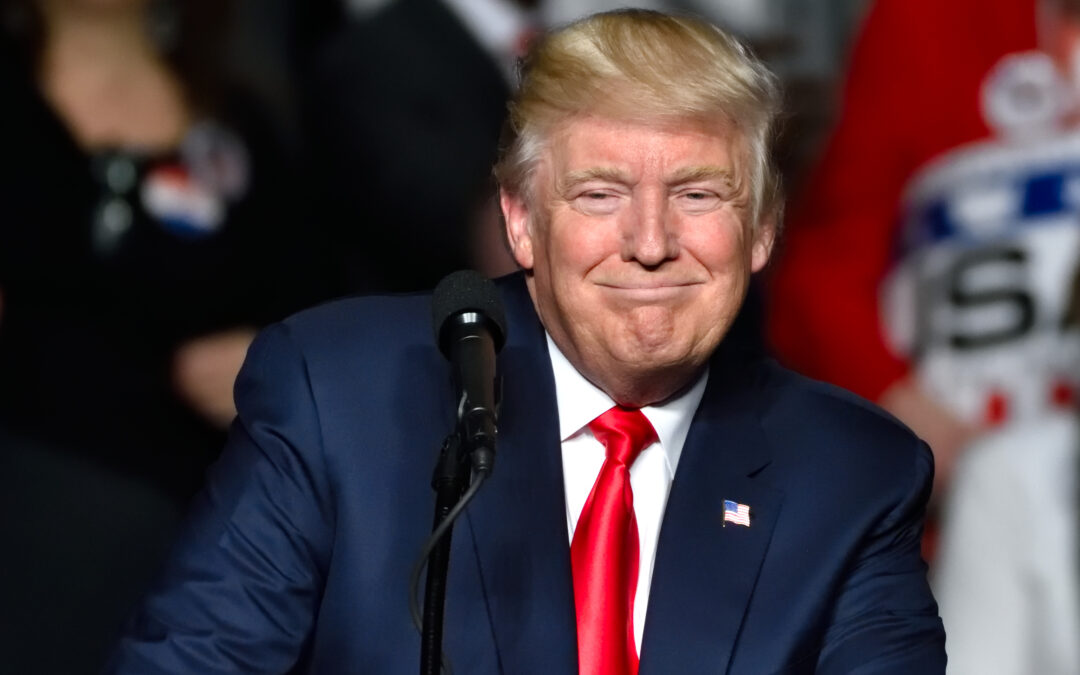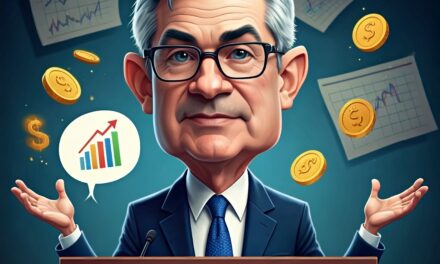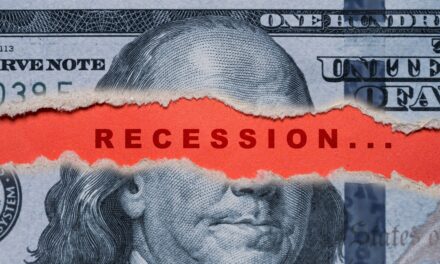Private investors, hedge funds, and Wall Street pundits all seem to be preparing for a catastrophic downturn…
But today’s payroll numbers point to a thriving economy under Trump’s new regime.
Let’s put on our “Mr. Labor” hats and dive into the numbers, and I’ll show you how and why my prediction for this month turned out to be spot on:
Video transcript:
Welcome to Moneyball Economics. I’m Andrew Zatlin, and guess what? Today’s payroll Friday.
So let’s put on our “Mr. Labor” hats. Let’s dive into this jobs report and see what we can learn. Before we do that, let’s also establish what makes a strong payroll number and what constitutes a weak payroll number, so we can understand what this number implies for the markets.
A strong number, well, let’s ignore the math. Let’s just say anything 200,000 and above, say in a given month (month-to-month) 200,000 above that coincides with economic growth of the hotter kind, not hot necessarily, but of the hotter kind.
The implication being that if it’s hot, the Fed’s not going to be inclined to cut rates anytime soon. At the opposite end of the spectrum, we’ve got a soft number. Let’s say that’s about say 125,000 or below closer. You get to zero or closer, you get to a recession.
So anything at 125,000 that’s a soft number corresponds to a slow or slowing economy, and it’s something the fed’s going to notice, especially if it’s been trend. Then we’ve got that sweet spot, say, 150,000 to 200,000.
Anything in that sweet spot implies economic growth still at a healthy level, not hot at that 200,000 level, not hot in a way that’s going to maybe incent the Fed to raise or keep rates high. But also not cold, not in a place where the fed’s going to be cutting rates anytime soon. But also not panicking … economy, growing, healthy growth, sustainable growth, and more of a let’s wait and see kind of outlook from the Fed.
What did the market expect coming into this Friday? Well, the market’s been expecting economic slowdown. In fact, look around you … look at what’s been going on in the bond and stock markets, they’ve been violently positioning for economic slowdown.
Why?
Well, this is the fourth month of the year. The fourth month where Trump’s been in place, and so when they look out, they see a January that was pretty soft, 111,000 — and remember, anything below 130 is soft with economic slowdown pretty much on it. February, also, pretty horrible. Closer to that a hundred thousand number, ignore the revisions again, got two months in a row where we are looking at economic slowdown. And then March came out and that kind of blew that hole in that whole broadside there because, well, it came out blistering hot 200,000 and above.
You take those three numbers we’re smack at a run rate that’s in that Goldilocks zone. That all meant this month was critical. Would it be slow like the first two months? Would it be hot like last month or would it will come in somewhere in the middle?
Consensus came in and we had a lot of experts expecting it was going to be more of that slowdown.
In fact, a lot of people thought it would be around 60,000. Consensus thought 130,000. So again, going back to that Goldilocks, that’s the lower range of Goldilocks. We are tilting down towards in a slowdown, not recession yet, but slowing and tripping our way, our way towards it.
Where was I? I was all by myself. I was up pretty high. In fact, I was the highest on Bloomberg with a number of 171,000. I said basically March was not a fluke.
Turns out well, I was right.
I was right in two ways…
I wasn’t just high. I wasn’t high enough this month. The actual number came out, 177,000 versus my 171,000 and they lowered March a little bit down to about 185,000, which is pretty much what I had predicted as well.
So why am I getting it right when consensus and everybody else is getting it wrong?
It has to do partly with my numbers. It has to do with my perspective. It also has to do with my understanding of the mechanics of this sausage making, and that’s what’s key.
When we look at this jobs report, it’s tempting to take it at face value and say, Ooh, 177,000 Goldilocks. Life is good, but there’s some sausage making in this that, well, it’s difficult to extrapolate very much from it, and I want to explain that…
First of all, the market’s super happy because if we’re in this Goldilocks zone, not too hot, 200,000 or above, not too cold, 130,000 and below just right, and it’s just right primarily because the Fed now has clearance to cut rates. Let me explain. We’re in that Goldilocks zone, not cold, not hot.
So why would the Fed be thinking about cutting rates?
Well, because as we came into this month, the concern is stagflation.
That is — we’ve got persistent inflation and a stagnating economy. That 170,000, well, if we take the all four months together, well, we’re around 150,000 as a run rate overall, actually a little bit less. So we’re on the lower end of the range.
We’re tilting into a slowing economy, and now the Fed this month might have clearance to cut rates, and that’s because in addition to unemployment data coming out, which was flat, 4.2% payroll’s coming out.
Again, that Goldilocks zone, we got a glimpse of wage inflation and guess what? It’s slowing. So if your fear is inflation going to remain high, but we’re slowing down, not sure what to do, well now we no longer have that fear. Labor inflation coming down. We know energy inflation’s been coming down.
Oil prices pretty low overall. The inflation boogeyman, it’s not in the closet anymore. It’s gone. So we’re not seeing stagflation. We’re seeing just the generic textbook slow down. So we can expect two things.
One, we can expect the fed to cut rates, maybe not urgently, but sometime in June, something because again, if we’re slowing down, the Fed can do something now and should do something at the same time.
It looks like all this recessionary panic is overdone. Again, we’ve got two months in a row under Trump’s belt where we’ve been in this nice Goldilocks zone.
Okay, let’s stop right there. This is all backwards looking.
For example, this April jobs data report that came out. They shut the books on that the second week of April, which is pretty much right when these tariffs started kicking in. So everything that we see in this jobs report, unfortunately we got to ignore it because we’re now in a new Trump economy that is tariff ridden.
What does that mean? It means that we are looking at a deep recession in the second half … if things don’t change. They need to change.
Now this month, there’s a behavioral finance element here. Up until now, up until spring break, spending was pretty much budgeted. Families had already in the early January, had to figure out where they were going on spring break, for example. All that spending was already locked and loaded, and in fact, as we get to the summertime, we’re in a similar place.
Summer holidays? Already have to pay for those. Same thing with Jimmy’s summer camp. All this spending that’s happening between now and the end of the summer, it’s kind of locked in. What isn’t locked in is the second half of the year. People come back from their summer holidays, they look around. If they don’t like what they see, well, it’s like Groundhog Day.
They’re going to race back in. What would change their mind one way or the other? Well, right now, portfolios are terrible. 401(k)s are terrible. Anyone who wanted to buy a car, a big ticket item like a home, they’re having to have second thoughts because they can’t dip into their portfolios. 401(k)s are down. That’s a problem. That’s also a problem as we go forward because this whole anxiety that Trump has brought forward, the chaos, the real world stuff, such as the tariffs and doge, coupled with the sentiment, people are going into summer vacation, not happy if Trump is going to turn this around.
He’s got to turn it around now so that when people come back from vacation, they’re feeling like they can spend again, that there’s some stability.
Well, what would create that? Well, let’s start off with tariffs. Tariffs would create that, but those are quite frankly, not only outside of Trump’s control, they’re only four weeks to go and more primarily that would affect sentiment, but it’s not tangible. You change tariffs, that’s further out.
Well, what is under his control? He could change the taxes, the tax code’s up for review right now, and there is chatter about putting money back into consumer pockets by getting a little flexible with some line items in, say for example, one line item in the tax code might be to raise the level, the cap on the state and local income taxes from 10,000 much higher. That’s great. Love seeing that, creates a lot of expectation.
But again, that’s for next year when I pay taxes next year, what can be done now? Well, the third and final thing that I would think Trump is going to do, he’s going to do it now, is give you a check for $5,000. Now, we’ve heard about that in the last couple of months. That was kind of a thought balloon, but I don’t think it is anymore.
Trump needs to give people something and he needs it to be very tangible, very impressionable, and $5,000 would certainly get people’s attention.
Unfortunately, people, they can be bought for cheap, but $5,000 is a small number. If $5,000 goes, the stock market’s going to rage even more.
Even now, I think the stock market’s going to start moving up. It’s going to get spitting distance, especially if Trump starts showing some tariff movement. We’re going to start getting closer to where we were in January and then moving forward, the implications of this jobs report, Fed’s probably going to cut rates because the data looks good, and the implication is, well, quite frankly, it’s not going to be getting any better.
We’re not going to get that inflationary pressure going forward. So again, a little wait and see one more month, but by and large, I think the market is sensing that the Fed is finally ready to cut rates in June. That’s about the only thing I can get out of this jobs report, other than, oh my God, the supply chain. Like manufacturers, they’re deer in a headlight right now. They don’t know what to do with these tariffs.
So we’ll find out because folks, we are in it to win it.
Zatlin out.

Andrew Zatlin
Editor, Andrew Zatlin’s Superforecast Trader





